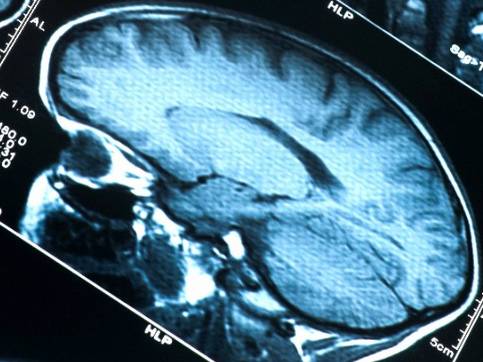Bionic Eye Has Sights Set On Human Trials

University of Sydney researchers are a step closer to developing a bionic eye with plans to move to human trials.
Professor of Biomedical Engineering, Gregg Suaning said the 'Phoenix 99 Bionic Eye' system involves a microchip being implanted on the top of the eye with a tiny camera mounted on a pair of glasses delivering images wirelessly to the microchip for processing.
"The system has been designed to stimulate cells in the retina and help the brain interpret them to deliver a sense of vision in the user," Professor Suaning said.
"Users of the bionic eye would see pixelated images that deliver outlines and edges allowing them to navigate their surroundings and to help them carry out activities of daily living.
"We hope it will allow people with vision loss to identifying if a person, doorway or window is nearby.
"Degenerative disorders impacting the retina affect many millions of people around the world but we aim to offer new hope with the introduction of the Phoenix 99 bionic eye system."
Professor Suaning said the University of Sydney team was now preparing an application for ethics approval in the hope of conducting a 'first-in-human' trial of the Phoenix 99 Bionic Eye next year.
"If successful, we can work to bring the device to a point where regulatory approvals in the global market can be obtained," he said.
Minister for Trade and Industry Niall Blair visited the Sydney labs to meet researchers and get an update on the project that aims to bring new hope to the many people suffering vision loss.
He said it was a great example of NSW's medtech industry, with the NSW Government recently releasing a strategy to help grow the sector.
"The idea of bionics first leapt into the public imagination with the 1970s science fiction action television series the Six Million Dollar Man," Mr Blair said.
"But Professor Gregg Suaning and his team at the University of Sydney are helping bring it to reality after developing microchip technology to give a sense of vision for those who have lost theirs.
"This is fantastic NSW innovation with potential to change the lives of millions of people who are losing sight from conditions like retinitis pigmentosa or macular degeneration."
How the bionic eye system works
A tiny microchip implant is placed on top of the eye and is connected to a set of electrodes that interface with surviving nerve tissue.
A very small camera attached to glasses captures the visual scene in front of the wearer. This is then processed by the computer inside a mobile telephone and a set of instructions are sent wirelessly to a telemetry device implanted behind the ear.
The implant decodes the wireless signal and sends electrical impulses to initiate events the brain interprets as vision.
All of this happens in real time to provide a sense of vision that aims to improve mobility, give greater ease of social interaction, and more independence to blind people worldwide.
Professor of Biomedical Engineering, Gregg Suaning said the 'Phoenix 99 Bionic Eye' system involves a microchip being implanted on the top of the eye with a tiny camera mounted on a pair of glasses delivering images wirelessly to the microchip for processing.
"The system has been designed to stimulate cells in the retina and help the brain interpret them to deliver a sense of vision in the user," Professor Suaning said.
"Users of the bionic eye would see pixelated images that deliver outlines and edges allowing them to navigate their surroundings and to help them carry out activities of daily living.
"We hope it will allow people with vision loss to identifying if a person, doorway or window is nearby.
"Degenerative disorders impacting the retina affect many millions of people around the world but we aim to offer new hope with the introduction of the Phoenix 99 bionic eye system."
Professor Suaning said the University of Sydney team was now preparing an application for ethics approval in the hope of conducting a 'first-in-human' trial of the Phoenix 99 Bionic Eye next year.
"If successful, we can work to bring the device to a point where regulatory approvals in the global market can be obtained," he said.
Minister for Trade and Industry Niall Blair visited the Sydney labs to meet researchers and get an update on the project that aims to bring new hope to the many people suffering vision loss.
He said it was a great example of NSW's medtech industry, with the NSW Government recently releasing a strategy to help grow the sector.
"The idea of bionics first leapt into the public imagination with the 1970s science fiction action television series the Six Million Dollar Man," Mr Blair said.
"But Professor Gregg Suaning and his team at the University of Sydney are helping bring it to reality after developing microchip technology to give a sense of vision for those who have lost theirs.
"This is fantastic NSW innovation with potential to change the lives of millions of people who are losing sight from conditions like retinitis pigmentosa or macular degeneration."
How the bionic eye system works
A tiny microchip implant is placed on top of the eye and is connected to a set of electrodes that interface with surviving nerve tissue.
A very small camera attached to glasses captures the visual scene in front of the wearer. This is then processed by the computer inside a mobile telephone and a set of instructions are sent wirelessly to a telemetry device implanted behind the ear.
The implant decodes the wireless signal and sends electrical impulses to initiate events the brain interprets as vision.
All of this happens in real time to provide a sense of vision that aims to improve mobility, give greater ease of social interaction, and more independence to blind people worldwide.
MORE





